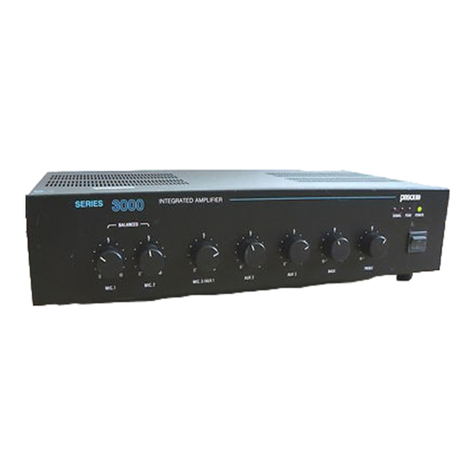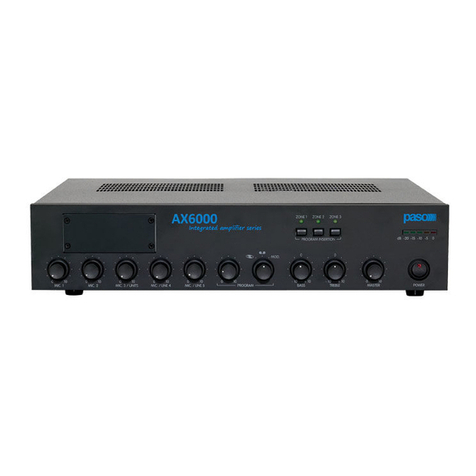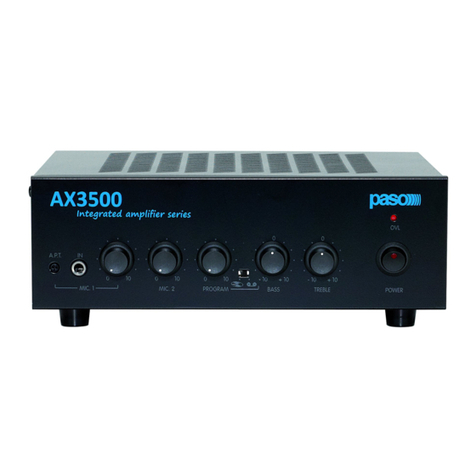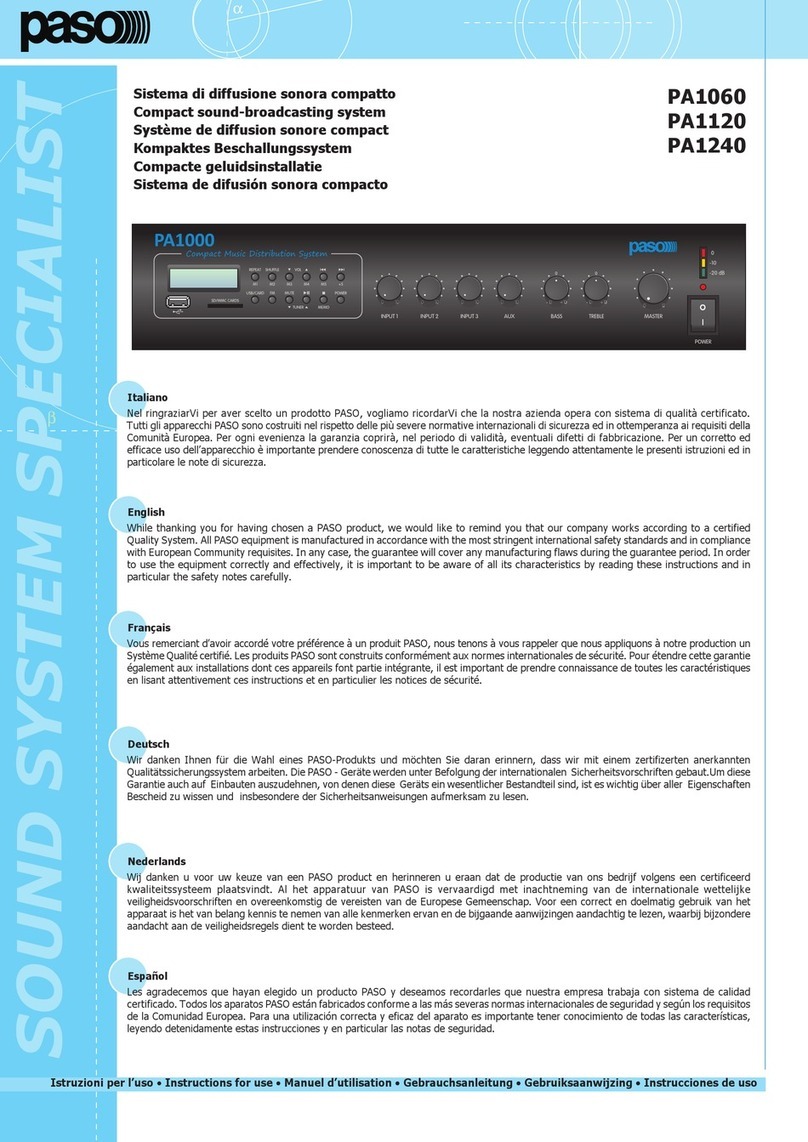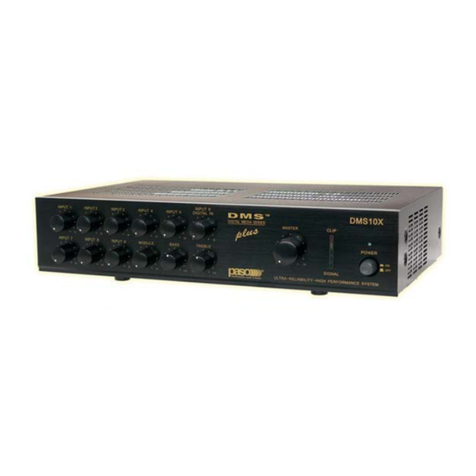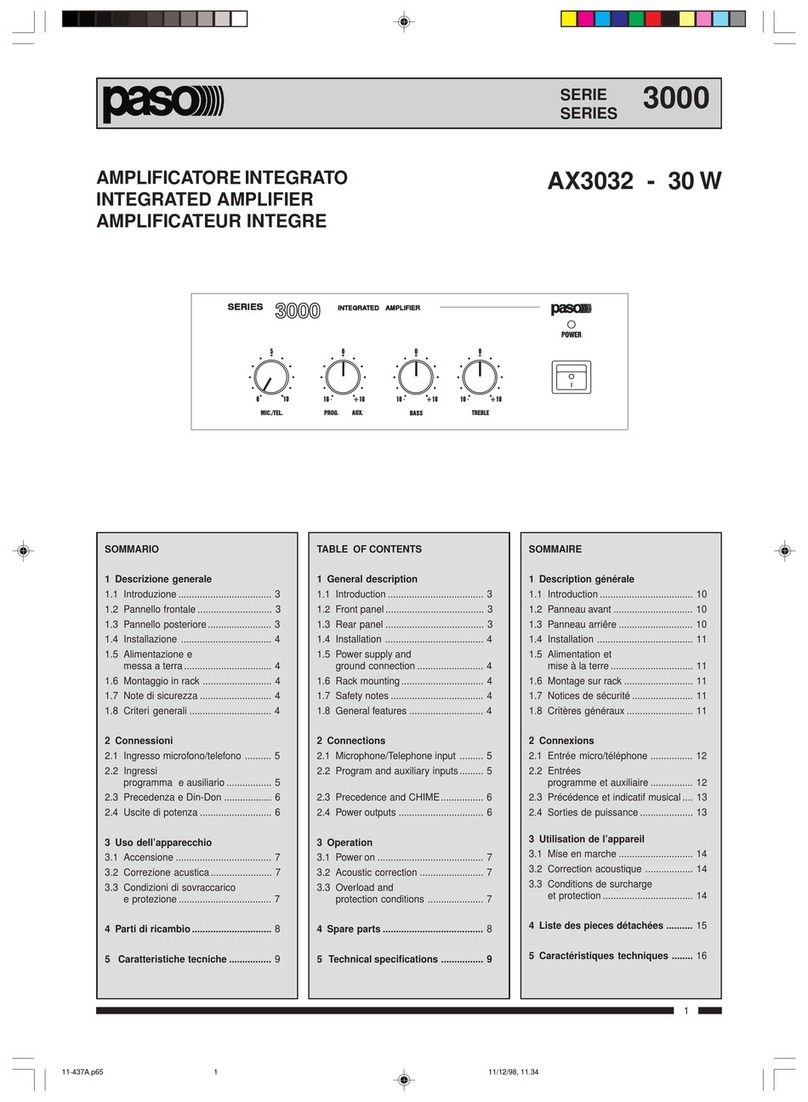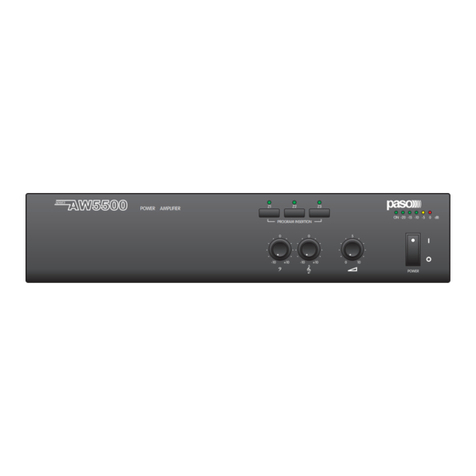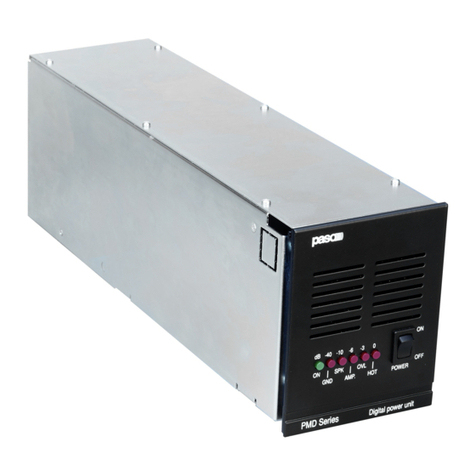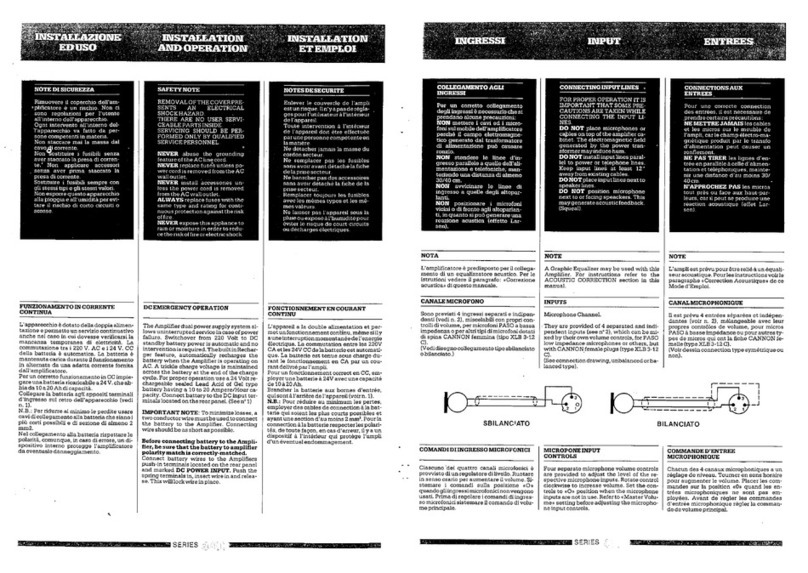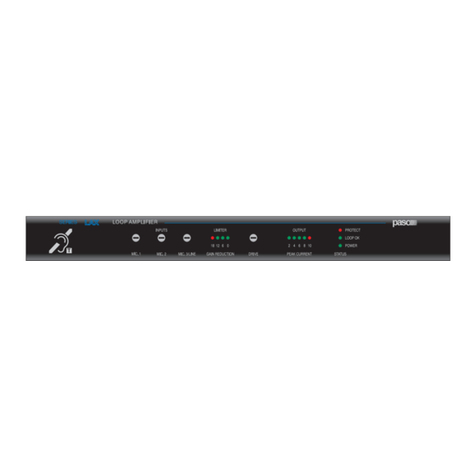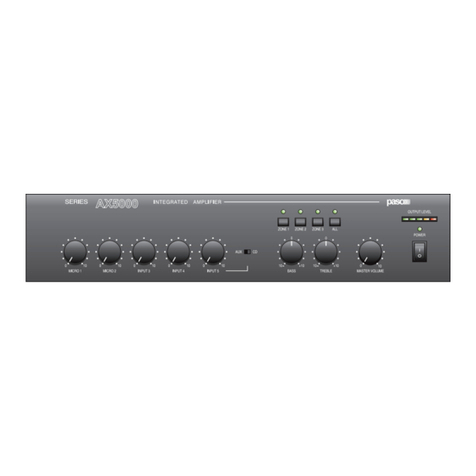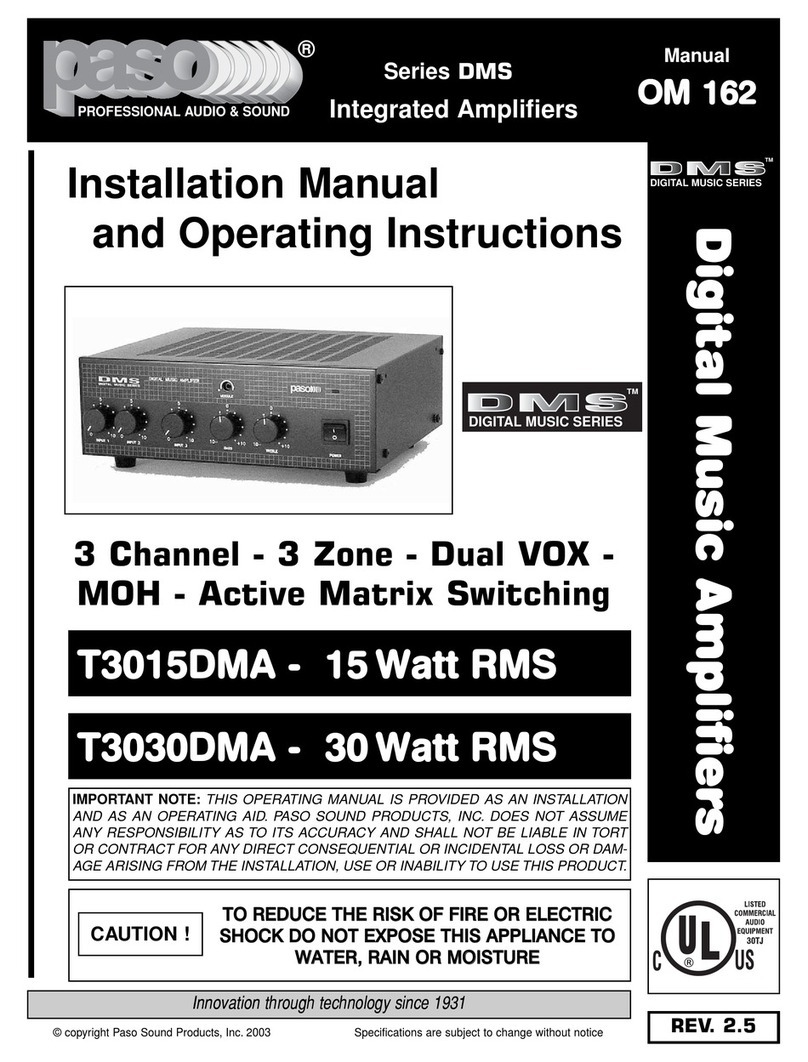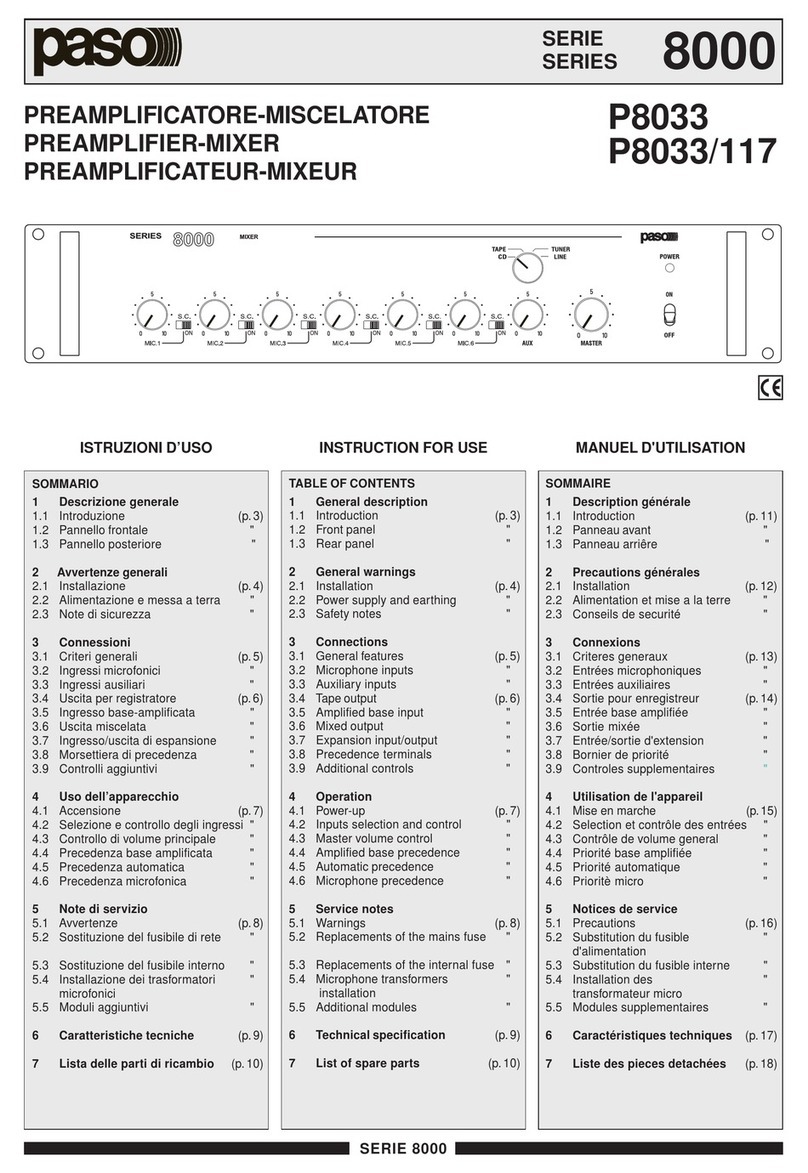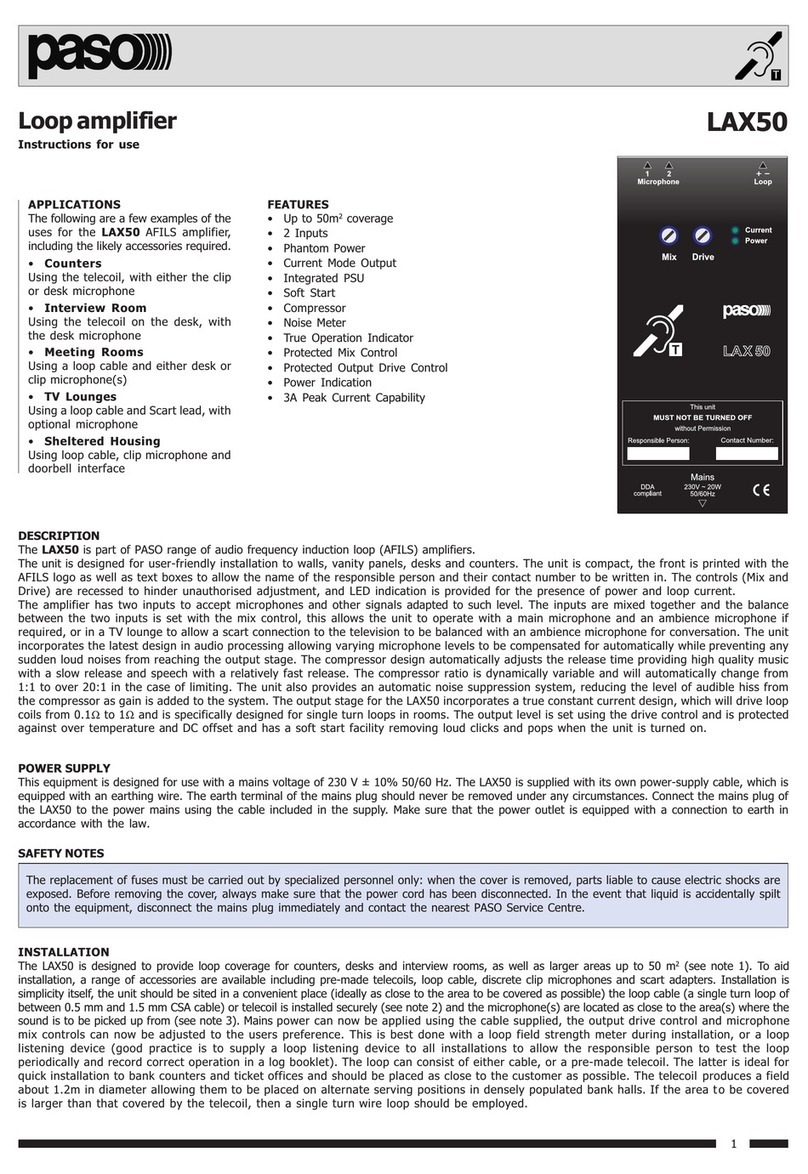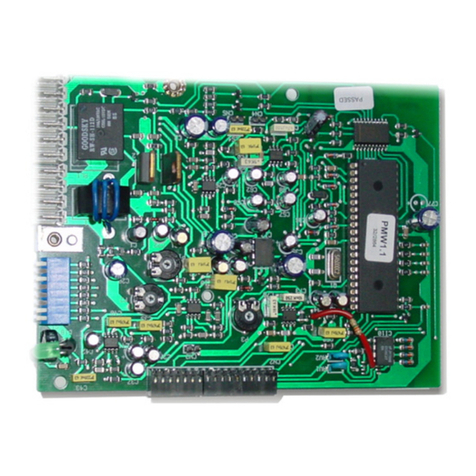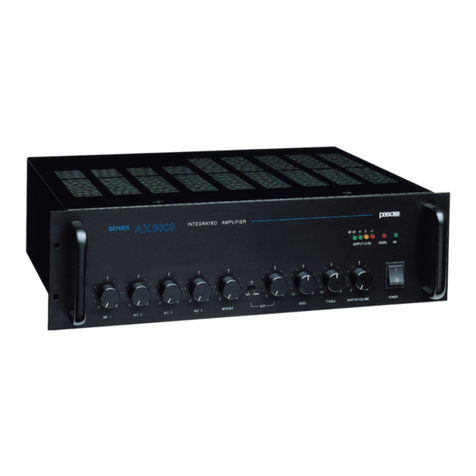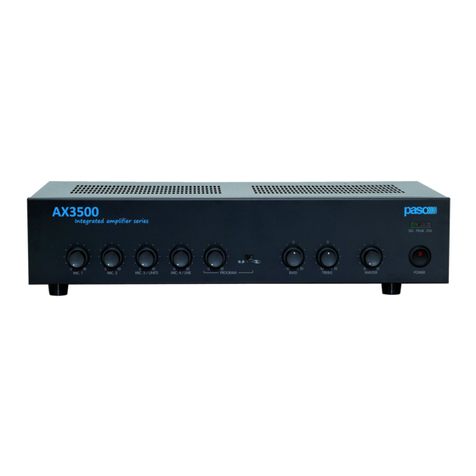
- PMS2000 System - 9
Ref. 11/500-B PMW60-B, PMW120-B, PMW240-B
3.5.1 Scheda traslatore di linea
Per installare questo accessorio è necessario rimuovere il pannello
laterale destro dell’apparecchio. Per il modello PMW240-B è
opportuno rimuovere, oltre al pannello laterale, anche il pannello
superiore; fare attenzione, in questo caso, affinchè il foglio di
materiale isolante, interposto tra il pannello superiore ed il circuito
elettrico sottostante, sia correttamente riposizionato al momento
della chiusura dell’apparecchio. Dopo aver identificato il connettore
CN101 (part. [C], fig. 3.4.1) occorrerà rimuovere i ponticelli
cortocircuitanti in esso inseriti ed inserire, al loro posto, la scheda
TM92. Richiudere l’apparecchio riposizionando il foglio di materiale
isolante (se presente) ed i pannelli precedentemente rimossi.
3.5.1 Line transformer card
To install this accessory it is necessary to remove the right-hand
side panel of the equipment. For model PMW240-B, in addition
to the side panel it is also advisable to remove the upper panel.
In this case care must be taken that the sheet of insulating
material placed between the upper panel and the electric circuit
underneath is repositioned correctly at the time of closing the
equipment. After identifying the CN101 connector (detail [C],
Figure 3.4.1), it will be necessary to remove the short-circuiting
jumpers installed in it and to insert the TM92 card in their place.
Close the equipment again, repositioning the sheet of insulating
material (if any) and the panels that were removed earlier.
3.5.2 Scheda di controllo
Gli amplificatori PMW60-B, PMW120-B e PMW240-B possono
montare al loro interno delle schede di controllo in grado di offrire
un elevato numero di funzioni aggiuntive. A seconda delle esigenze,
è possibile inserire la scheda PM2092-V, che gestisce tutte le
funzioni dell’amplificatore, dagli ingressi alla diagnostica o la
scheda PM2092/2-V, che somma alle caratteristiche della prima
anche la possibilità di verificare un eventuale cortocircuito presente
su una delle due uscite. Il funzionamento dell’amplificatore con
una delle schede di controllo installata sarà, pertanto, legato al
funzionamento della scheda stessa descritto ampiamente nel
manuale istruzioni ad essa allegato. Attenersi, per l’installazione
della scheda di controllo, alla seguente procedura:
1. assicurarsi che l’apparecchio sia disconnesso dalla rete;
2. rimuovere il pannello laterale sinistro dell’amplificatore;
3. togliere la piastrina (particolare [A], fig.3.5.2.1) dal pannello
posteriore dell’amplificatore svitando la vite [B];
4. togliere la scheda regolazione volume (particolare [C]);
5. posizionare la scheda di controllo all’interno dell’amplificatore,
come illustrato in fig. 3.5.2.2, facendo combaciare i fori del
connettore femmina a 17 poli (particolare [D]) con i terminali
del corrispettivo connettore a pettine dell’apparecchio
(particolare [A], fig. 3.4.1);
3.5.2 Control card
Amplifiers PMW60-B, PMW120-B and PMW240-B can assemble
their internal control cards can offer a high number of additional
features. Depending on your needs, you can insert the card
PM2092-V, which manages all the functions of the amplifier,
from the inputs to the diagnostics or the board PM2092/2-V,
which in addition to the characteristics of the first, can also check
any short circuit on one of two outputs. Operation of the amplifier
with the control card installed inside it will therefore be linked to
the operation of the card itself, which is described in detail in the
instruction manual supplied with it. To install the control card,
follow the procedure described below:
1.
Make sure that the equipment is disconnected from the mains;
2. Remove the left side panel of the amplifier;
3. Remove the small plate (detail [A], Figure 3.5.2.1) from the
rear panel of the amplifier by unscrewing the screw [B];
4. Take out the volume-control card (detail [C]);
5. Position the control card inside the amplifier as illustrated in
Figure 3.5.2.2, in such a way that the holes in the 17-pole female
connector (detail [D]) match the terminals of the corresponding
comb-
type connector on the equipment (detail [A], Figure
3.4.1);
Fig. 3.5.2.1 Fig. 3.5.2.2
6. inserire nel foro passante [E] un piccolo giravite e, facendo
leva sul pannello superiore dell’amplificatore, spingere verso
l’alto la scheda di controllo fino a che i terminali a pettine
risultino completamente inseriti nel connettore [D];
7. fissare la scheda al pannello posteriore dell’apparecchio
avvitando la vite autofilettante [F] (fornita a corredo della
scheda di controllo) nell’apposito foro (vedi fig. 3.5.2.2);
8. avvitare la vite con passo metrico [G] (anch’essa fornita a
corredo della scheda di controllo) nel foro [E] indicato in
fig. 3.5.2.2;
9. richiudere l’amplificatore con il pannello precedentemente
rimosso.
6. Insert a small screwdriver into the through hole [E] and then,
by exerting a lever effect on the upper panel of the amplifier,
push the control card upwards until the comb-type terminals
have fitted completely into the connector [D].
7. Secure the card to the rear panel of the equipment, screwing
the tapping screw [F] (included in the supply of the control
card) into the appropriate hole (see Fig. 3.5.2.2).
8. Screw the threaded screw [G] (also included in the
supply of the control card) into the hole [E] indicated in
Figure 3.5.2.2.
9. Close the amplifier again with the panel that was removed
earlier.
11-672_senza concatenamento.indd9 911-672_senza concatenamento.indd9 9 22/03/2010 14.57.1222/03/2010 14.57.12
